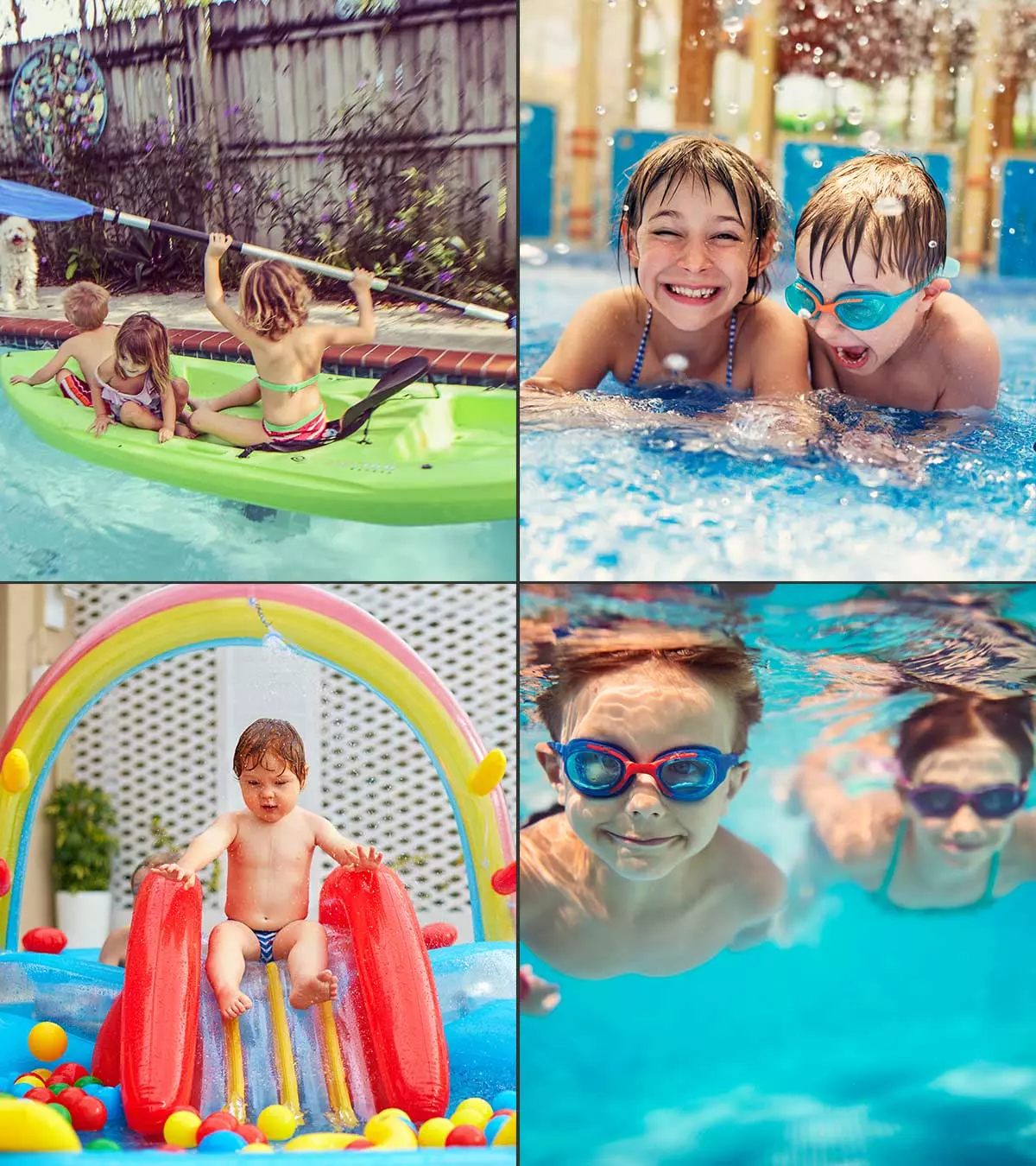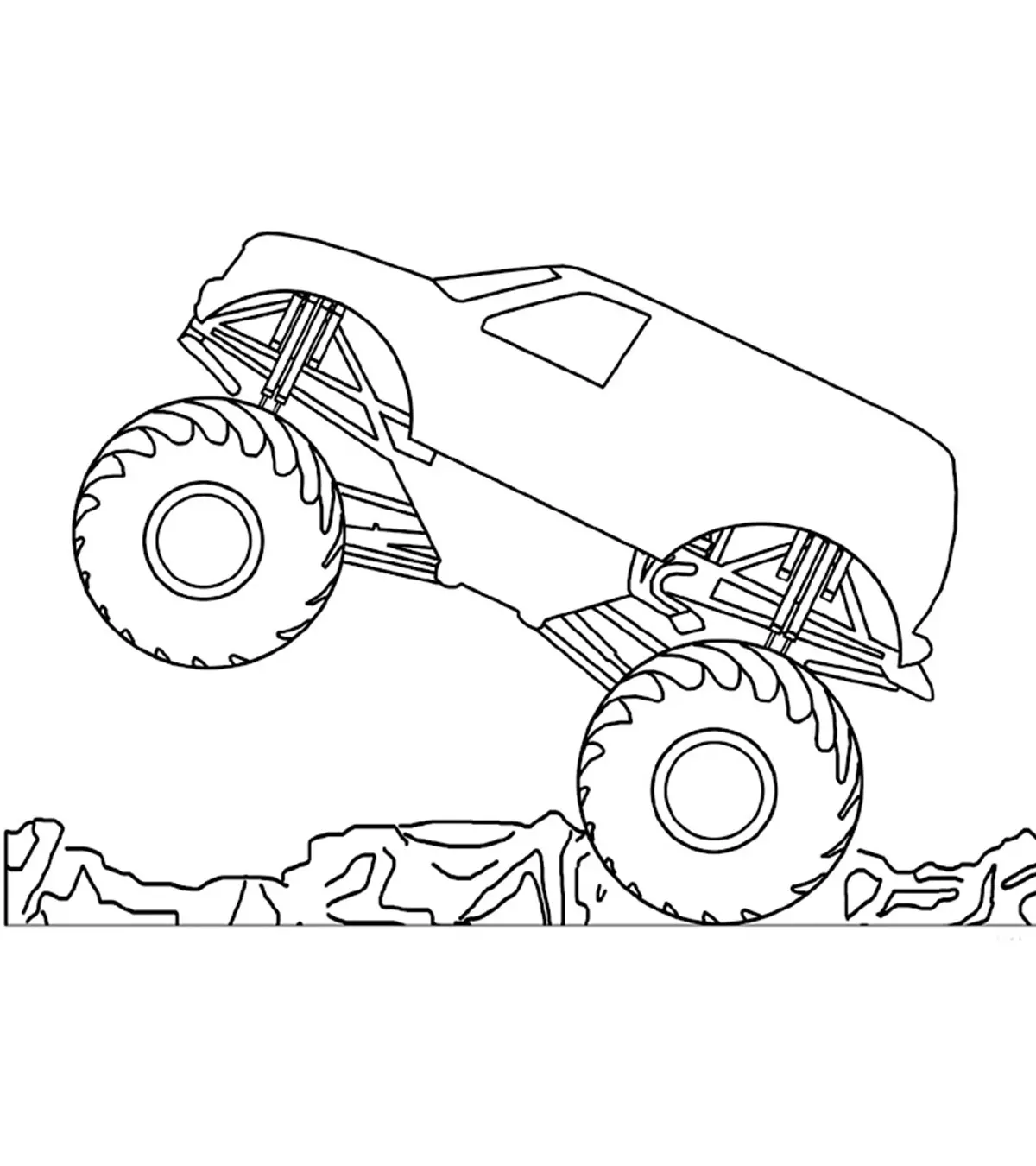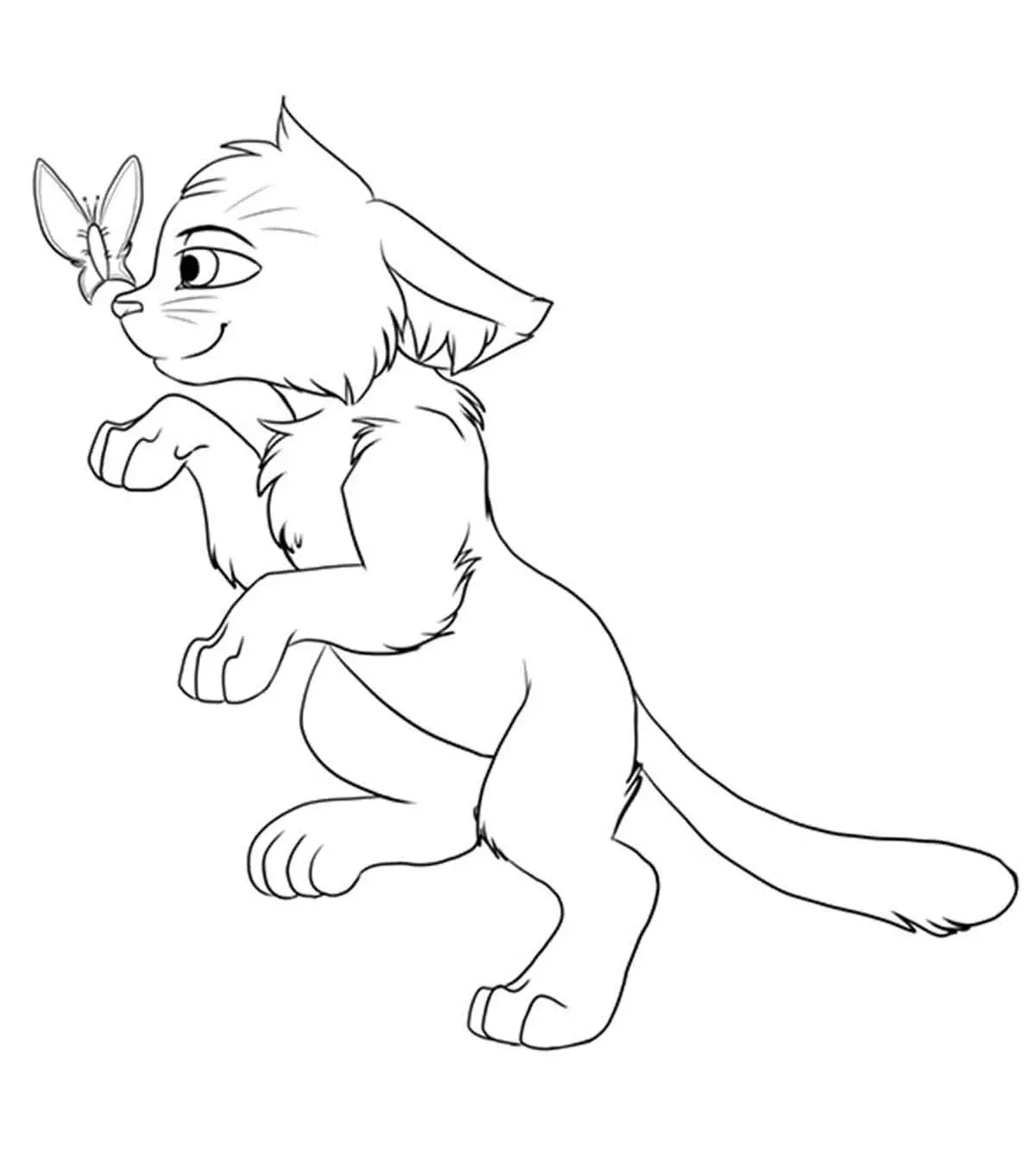
Image: iStock
If your child’s school holidays are just around the corner, you might be confused about how to spend this time with them effectively. Here’s an attractive option—learn how to fly a kite with kids. Flying a kite with children is fun, and you can even turn it into a competition and see who can fly a kite the highest. An anonymous blogger going by the username Cre8Tivmel shares their experience of flying kites with their siblings during their July/ August vacations. They write, “I was one of the youngest children in the group, therefore, I always tagged along on my siblings heel. As a result, I was sent into the bush to retrieve kites when they played, I was their gofer. A job I did not mind because at that age play was the essence of the day. Reminiscing about their duty as their brother’s kite-making helper, they add, “I was a happy helper, because afterwards, I got my own special kite. Besides, I was the envy of the other children who surrounded him while they patiently awaited his creation. What a beautiful memory (i).” There’s nothing better than the cool breeze beating on their faces while they run through an open field flying a kite. You can also have just as much fun as them and show them what your childhood was like. So, if you and your children need directions on how to get your kites to fly steadily, you’ve come to the right place. Read on to know more.
Key Pointers
- One of the ways to ways to keep your child entertained yet busy is to fly a kite.
- Some important points before you fly a kite are to choose the perfect kite, find the ideal weather conditions, and pick the right place to fly it.
- Some benefits of flying a kite include improved coordination, upper body exercise, and sensory experience.
- Kite flying can teach spatial awareness, patience, persistence, and problem-solving skills.
History Of Kite Flying
Kite flying has been a part of various cultures for centuries. It has deep historical and cultural significance in different parts of the world. The exact origin of kites is unclear, but its first record is from 200 B.C. when Chinese General Han Hsin of the Han Dynasty flew a kite over a city he was attacking. He used it to figure out how far his army needed to tunnel to get past the city’s defenses (1).
By the 13th century, kite flying spread across Asia and the Middle East through established trade routes. Every region developed unique kite designs and associated the activity with unique cultural significance. Later in the same century, Marco Polo documented the practical application of kites by Chinese merchants, specifically their use in forecasting the success of maritime voyages (2)
The introduction of kites to Europe occurred gradually between the 14th and 15th centuries, as was mentioned in the observations by explorers such as Vasco da Gama and in the works of William Shakespeare. In the 16th and 17th centuries, sailors returning from Japan and Malaysia introduced kites to Europe. Still, they were mostly seen as curiosities and did not gain significant cultural influence at the time.
Before You Fly The Kite
Before we begin, you have to keep some things in mind, which are as follows:
1. The perfect kite
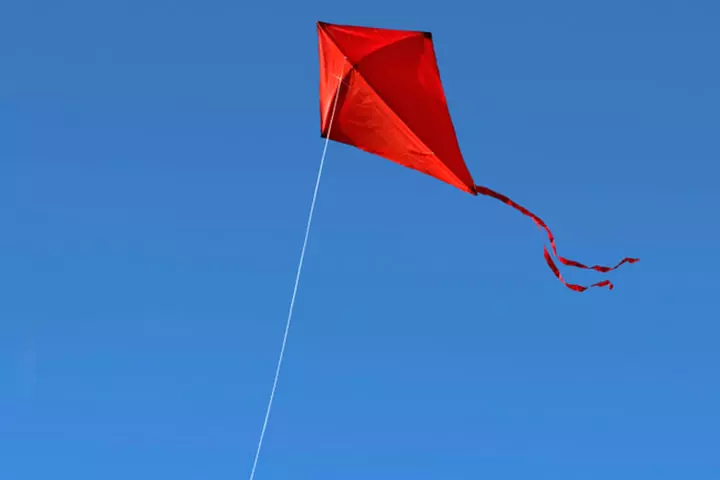
Kids have many varieties to choose from when it comes to kites. Your kid can even make a kite at home. While the standard kites are great for beginners, kids looking for something challenging can go for bigger and fancier kites. But remember, each kite offers a different flying experience.
If the wind is light, around 6 to 15 miles per hour, then diamond, delta, and dragon kites would be perfect.
If the wind is strong, say, 15 to 25, then the box or Parafoil kite is the best kids flying kites.
2. The ideal weather conditions

The weather conditions can make or break your plan of flying kites with children. If the weather is breezy, but not enough to bowl you over, then it’s the perfect time for flying kites. With a nice breeze, your children can make the kite soar and dance. You can even take the windsock or flag test to avert the possibility of a disappointed afternoon. Also, ensure that you fly in safe conditions. By safe conditions, we mean no lightning or rains.
 Trivia
Trivia3. The right place

As important, it is to pick the right kite and ideal weather condition, it is equally important to select the right place for setting the kite soaring in the sky. When it comes to flying kites, more room equals more fun. Parks, beaches, terrace and fields are the best bet. Trees are harmless, but they ‘eat’ kites. So the fewer, the better. Make sure that your kid does not fly the kites near power lines or roads.
How To Fly A Kite? – Step-By-Step Instructions
Now that we have all the basics, here are some instructions for children on how to fly a kite.
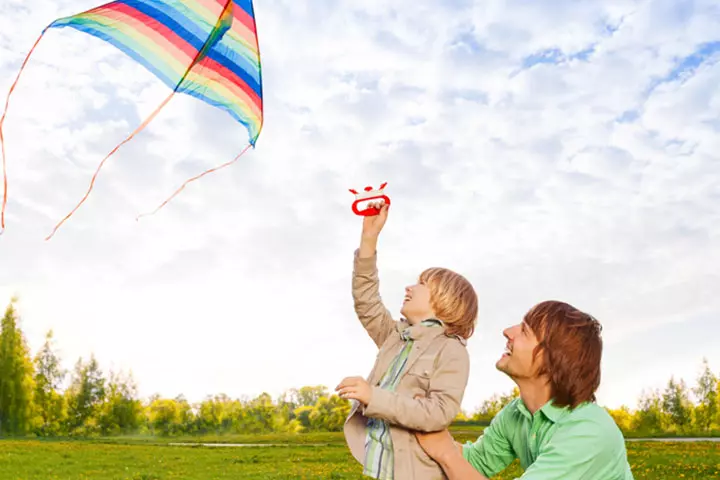
Now that we have all the basics, let’s have a look at some kite instructions for kids.
- The person holding the kite is called the ‘launcher’, and the person flying the kite is the ‘flier.’ The launcher’s back should be towards the wind, with the kite facing him. If the wind is behind the kite, it will crash. And do not launch the kite while running as the kite can crash due to uncontrolled tugging.
- Move around 20 meters away from the kite. There should not be any obstacle from where you set off the kite. Release the kite. We’d suggest you wait for the gust of wind before taking off.
- It’s all up to your kid now. As you release the kite, your child should pull the string to provide some friction.
- Your kid has to pay attention to the direction of the wind. If the direction of the wind changes, he’ll have to adapt to it. You both just have to arrange yourselves so that the wind blows from the Flier to the Launcher. This way, the wind will go in a straight line from the Flier to the Launcher. Even your little one will be able to fly for a longer time.
- Now tell your little one to release the length of the flying line. And carefully monitor the end of the string. If the kite is weak, the line will come off the bridle, resulting in losing the kite.
- Now ask him to pull the string to lower the kite and wrap the line around the coil, just how it started.
If the above instructions still complicate the process, look at the video below to learn how to fly a kite. Watch this video with your child so they, too, learn by watching the process.
Make Things Interesting

Now that your kite is soaring up in the air, spice it up a bit by adopting these steps:
- Challenge your kid to see how quickly they can get the string or flying line to a 45 degree from their hands.
- Tell them to keep track how fast they can get 150 meters of the line from the hand launch.
You can even challenge your kid to bring the kite in their hands, but without letting it touch the ground. They have to pull it quickly to keep it airborne. - It will be interesting to see kids flying kite.
- Consider organizing a family kite-flying competition to foster teamwork and create lasting memories together.
 Did you know?
Did you know?Benefits Of Flying A Kite
Kite flying is a multifaceted activity that offers children physical exercise and cognitive stimulation. Children actively run and jump while engaging in this pastime, which enhances their coordination and overall physical fitness. It also helps develop gross and fine motor skills as they learn to control and maneuver the kite. Kite flying is also a sensory experience, where one can experience visual delights, the touch of the wind, and the tactile feel of handling the kite. It can also be an educational tool to introduce children to the principles of aerodynamics, weather patterns, and the science of flight, thereby nurturing an interest in STEM (science, technology, engineering, and mathematics) fields (3). The creative aspects of designing and fixing kites foster problem-solving skills and creativity. It also encourages teamwork and social interaction. Flying a kite also benefits children emotionally as it boosts confidence and provides a sense of accomplishment, especially when children master the art of launching and controlling their kites. Additionally, it connects them with nature and encourages outdoor play.
Safety Tips To Follow When Flying A Kite
Flying a kite can be a wonderful bonding experience with your child, but ensuring safety while enjoying this outdoor activity is essential. Here are some general tips and safety guidelines from the American Kitefliers Association (4). Following these precautions can make kite flying safe and enjoyable for everyone.
- Supervise your kids when flying kites to ensure safety. Do not leave them alone, at least not when they are still learning to fly a kite.
- To avoid accidents, fly kites in open areas, away from trees, power lines, and roads.
- Avoid flying kites near animals, especially nesting birds or horses with riders, to prevent distress.
- Use non-conductive string, as metallic or wet strings can cause electric shocks if they touch power lines.
- Check the weather beforehand and avoid flying in rain or thunderstorms to prevent lightning risks.
- Always fly kites at least 150 feet from power lines to help prevent electrocution or outages. Also, avoid flying within 5 miles of any airport boundaries.
- Always be mindful of strong winds that can make controlling the kite difficult.
- Be mindful of other people, pets, and wildlife around you. Make sure the kite string doesn’t become a hazard for others.
- Always wear sun protection like hats and sunscreen. Use hand gloves to avoid rope burns.
Tips To Handle Common Kite Flying Problems
Every kite flyer will encounter some common problems affecting their experience of kite flying. Here are some tips to help resolve those common flying problems.
Kite does not fly
- There is probably a lack of wind in your flying area. So, ensure there is enough wind. A kite needs a minimum of 5-8 mph of wind to fly. The kite may not lift off if there is no wind or it’s too strong.
- Ensure the kite is not damaged or torn. Even a bent frame or damaged sail can prevent it from flying.
- Check if the kite is launched at the right degree. Start with a 30-degree angle to the ground and see how it behaves.
- If the line you are using is too thick or too thin for the kite, it may not fly well. So, opt for a strong, medium-weight string suitable for the size and type of kite.
Kite keeps crashing
- First, check the direction of the wind. It will most likely crash if you try to fly the kite at the wrong angle.
- The string you are using is probably loose, which could be the cause of the crash. Keep the string taut to maintain control.
- If the kite has a tail, ensure it is long enough and attached correctly. A short or loose tail can cause instability and cause the kite to crash.
Kite spins or loops
- A faulty bridle often causes spinning. Adjust the bridle, which connects the kite to the string. If the kite spins uncontrollably, try lengthening or shortening the front or rear bridle lines.
- If the kite is spinning out of control, check that the center of gravity is in the right place. Some kites may need ballast or adjustments to keep them stable.
Frequently Asked Questions
1. Do kids like to fly kites?
Children would be curious to watch things fly. Kites are colorful objects that children might love to watch and want to try their hands on. While children can fly kites, introducing them to the activity at an appropriate age and taking safety precautions are necessary to make kite flying a safe and enjoyable experience for children.
2. At what age can a child fly a kite?
Children between three and five years can try flying kites under parental guidance and supervision. However, every child is different. So, observe your child’s readiness and decide accordingly. Parents should buy kites designed especially for children. Take all the necessary precautions to prevent the potential dangers of kite flying.
3. What are the dangers of kite flying for children?
There are several benefits of outdoor play for kids, and kite flying is a fun activity children enjoy. However, parents should observe precautions to avoid potential issues, such as cuts and bruising caused by kite lines/strings. Kite flying in crowded places can distract children, causing falls and accidents. In some cases, kite strings can entangle and create obstacles for people walking on roads. These strings could also cause minor to fatal cuts and lacerations if they come in contact with the face or neck.
Fly a kite with kids during their holidays or family picnic to double the fun. For an even more engaging experience, you can learn how to make a kite for kids and involve them in the crafting process. Children would enjoy the activity and love to compete with you. You can also teach them how to fly a kite to win the kite flying contest. Give them a perfect kite and fly it in the right place with ideal weather conditions. Parks, terraces, and fields are the best places to fly kites. Kite flying is also one of the most entertaining beach games and activities for kids. Ensure that your child wears a glove while controlling the thread since it can cause pain and discomfort.
Infographic: Step-By-Step Instructions On Flying A Kite
Flying a kite is a fun and exciting outdoor activity that people of all ages can enjoy. So do you want your child also to enjoy this classic activity while you relive your favorite childhood memory? The infographic below will provide the information they need to soar high in the sky with their kite.

Illustration: Momjunction Design Team
Illustration: Easy Steps To Fly A Kite With Your Kids
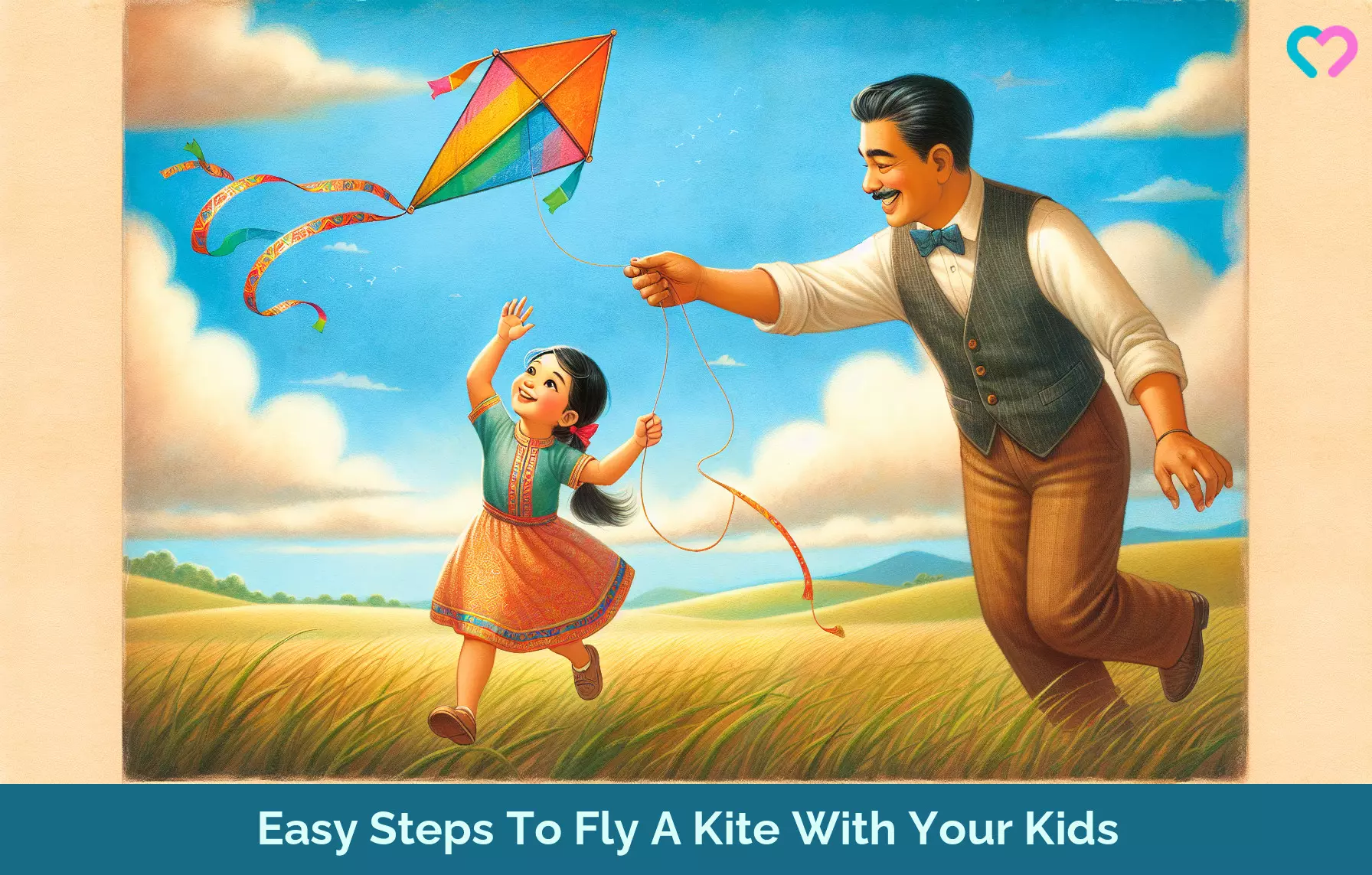
Image: Dalle E/MomJunction Design Team
Learn how to fly a kite in just 3 minutes! Get ready to experience the thrill of kite flying with this easy-to-follow tutorial. Perfect for beginners!
Personal Experience: Source
MomJunction articles include first-hand experiences to provide you with better insights through real-life narratives. Here are the sources of personal accounts referenced in this article.
i. Kite flying;https://trinimemories.wordpress.com/2019/10/24/kite-flying/
References
- Kite History.
https://nationalkitemonth.org/kite-history-overview/kite-history/ - History of Kites.
https://www.kite.org/about-kites/history-of-kites/ - Kites.
https://www.nasa.gov/stem-content/kites/ - Kite Safety.
https://www.kite.org/about-kites/kite-safety/
Community Experiences
Join the conversation and become a part of our nurturing community! Share your stories, experiences, and insights to connect with fellow parents.
Read full bio of Nya Dobbs
Read full bio of Debolina Raja
Read full bio of Harshita Makvana
Read full bio of Nisha Bharatan











